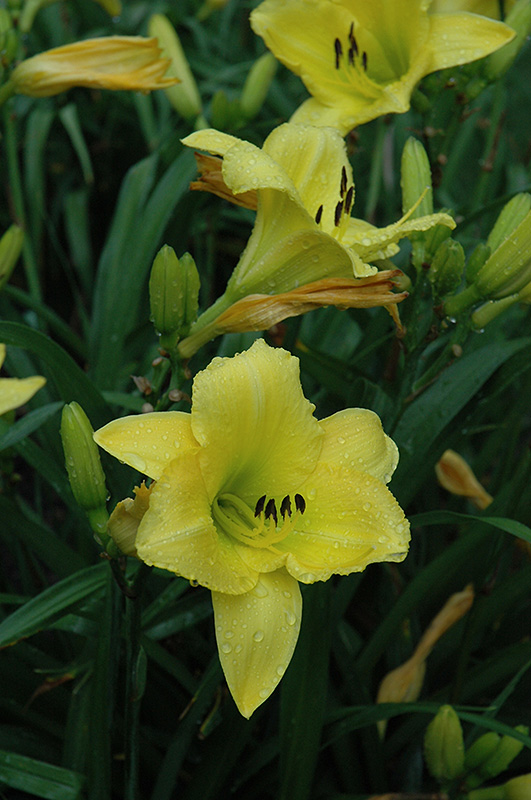Know Before You Go!
Get notified before our plants arrive in stores near you.
Plant Care Library
Height: 12 inches
Spacing: 10 inches
Sunlight:
![]()
![]()
Hardiness Zone: 2b
Description:
Easy to grow with excellent heat and humidity tolerance; yellow trumpeted flowers rise above low growing, arching green foliage; excellent addition to perennial borders, rock gardens and flower beds
Ornamental Features
Dwarf Yellow Daylily has masses of beautiful yellow trumpet-shaped flowers at the ends of the stems in late spring, which are most effective when planted in groupings. The flowers are excellent for cutting. Its grassy leaves remain green in color throughout the season.
Landscape Attributes
Dwarf Yellow Daylily is an herbaceous perennial with a shapely form and gracefully arching foliage. It brings an extremely fine and delicate texture to the garden composition and should be used to full effect.
This is a relatively low maintenance plant, and is best cleaned up in early spring before it resumes active growth for the season. It is a good choice for attracting butterflies to your yard. It has no significant negative characteristics.
Dwarf Yellow Daylily is recommended for the following landscape applications;
- Mass Planting
- Rock/Alpine Gardens
- Border Edging
- General Garden Use
- Groundcover
Planting & Growing
Dwarf Yellow Daylily will grow to be about 12 inches tall at maturity, with a spread of 12 inches. When grown in masses or used as a bedding plant, individual plants should be spaced approximately 10 inches apart. Its foliage tends to remain dense right to the ground, not requiring facer plants in front. It grows at a medium rate, and under ideal conditions can be expected to live for approximately 10 years. As an herbaceous perennial, this plant will usually die back to the crown each winter, and will regrow from the base each spring. Be careful not to disturb the crown in late winter when it may not be readily seen!
This plant does best in full sun to partial shade. It is very adaptable to both dry and moist locations, and should do just fine under typical garden conditions. It is not particular as to soil type or pH. It is highly tolerant of urban pollution and will even thrive in inner city environments. This species is not originally from North America. It can be propagated by division.
A NetPS Plant Finder tool

